Ditapis dengan
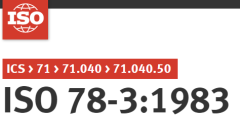
Chemistry-Layouts for Standard Part 3: Standard for Moleccular Absorption Spe…
Establishes a layout for standard methods of analysis of solutions in the visible and near ultra-violet regions. Gives some recommendations for their presentation and wording. The layout is preceded by a clause "Therminology and definitions", which supplements the information given in ISO 6286.
- Edisi
- -
- ISBN/ISSN
- -
- Deskripsi Fisik
- -
- Judul Seri
- ISO 78/3-1983 (E).
- No. Panggil
- -
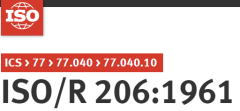
Creep Stress Rupture Testing of Steel at Elevated Temperatures
Applies to those tests in which the time for stress rupture is measured under tensile creep stress at elevated temperatures to tests in single machines and to each test in multiple testing machines.
- Edisi
- -
- ISBN/ISSN
- -
- Deskripsi Fisik
- -
- Judul Seri
- ISO/R 206-1961 (E)
- No. Panggil
- -
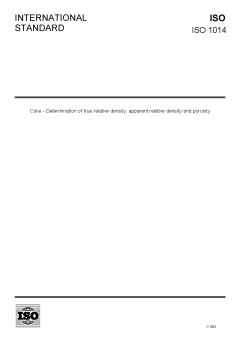
Coke Determination of True Relative Density, Apparent Relative Density and Po…
For calculating the true relative density the mass of water displaced by a known masss of dry coke, ground to pass a sieve of nominal size of openings 212 um, is determined using a pyknometer. - The volume of a large amount of coke is determined by displacement in water; dividing the mass of the dried coke by the mass of an equal volume of water gives the apparent relative density. - The porosi…
- Edisi
- -
- ISBN/ISSN
- -
- Deskripsi Fisik
- -
- Judul Seri
- ISO 1014-1985(E)
- No. Panggil
- -
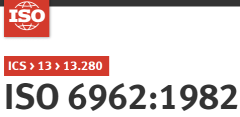
Standard Method for Testing the Long Term Alpha Irradiation Stability of Soli…
Specifies a method designed to check the long-term stability of a solid to alpha disintegration by detection of all modifications in the properties of an irradiated sample. The solid is borosilicate glass or, as an alternative, ceramics or glass-ceramics and a two-phase mixture of glass beads dispersed in a metal matrix, made from adequate (stable) fission product elements spiked with appropria…
- Edisi
- -
- ISBN/ISSN
- -
- Deskripsi Fisik
- -
- Judul Seri
- ISO 6962-1982 (E)
- No. Panggil
- -
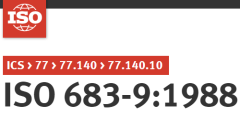
Heat-Treatable Steels, Alloys Steels and Free-Cutting Steels-Port 9: Wrought …
Gives the technical delivery requirements for blooms, billets, slabs, bars, wire rod and bright steel manufactured from the steels listed in table 3 and supplied in one of the heat-treatment conditions given in table 1 and in one of the surface conditions given in table 2. Covers three groups of wrought free-cutting steels for mechanical purposes (not intended for heat treatment, suitable for c…
- Edisi
- -
- ISBN/ISSN
- -
- Deskripsi Fisik
- -
- Judul Seri
- ISO 683-9: 1988 (E)
- No. Panggil
- -
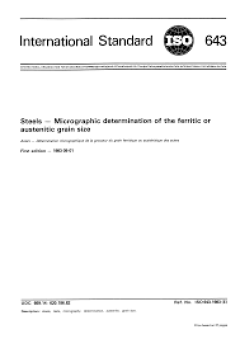
Steels-Micrographie Determination of the Ferritic or Austenitic Grain Size
Specifies the methods for revealing the grain and for estimating the mean size of the grain revealed. Includes a counting method (annex A) and determination of grain size by using of standard charts (annnexes B and C) taken from an AFNOR Standard and an ASTM document, respectively.
- Edisi
- -
- ISBN/ISSN
- -
- Deskripsi Fisik
- -
- Judul Seri
- ISO 643-1983 (E)
- No. Panggil
- -
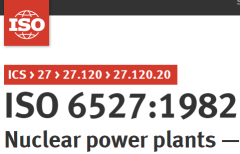
Nuclear Power Plants-Reliability data Exchange-General Guidlines
Identifies the typical parameters of a component that permit it to be characterized unequivocally and to allow the corresponding reliability data to be associated with those of other components having equivalent typical parameters. Parameters refer to technical characteristics including the physical principle of operation and quality level and to actual operating conditions and maintenance and …
- Edisi
- -
- ISBN/ISSN
- -
- Deskripsi Fisik
- -
- Judul Seri
- ISO 6527-1982 (E)
- No. Panggil
- -
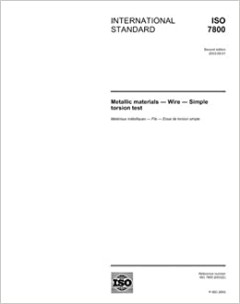
Metalic Materials-Wire-Simple Torsion Test
Specifies the method for determining the ability of wire of diameter or thickness 0,3 to 10 mm inclusive to undergo plastic deformation during simple torsion. The test consists of twisting a test piece of wire around its own axis in one direction.
- Edisi
- -
- ISBN/ISSN
- -
- Deskripsi Fisik
- -
- Judul Seri
- ISO 7800-1984 (E)
- No. Panggil
- -

Recommended Protice for Radiographie Examination of Fuison Welded Joints-Port…
The detection of flaws in an item submitted to X- or gamma-radiographic examination depends on the particularities of the technique employed. This part of ISO 1106 specifies general techniques of weld radiography with the object of enabling satisfactory results to be obtained economically. The techniques are based on generally accepted practice and the fundamental theory of the subject.
- Edisi
- -
- ISBN/ISSN
- -
- Deskripsi Fisik
- -
- Judul Seri
- ISO 1106/2-1985 (E)
- No. Panggil
- -
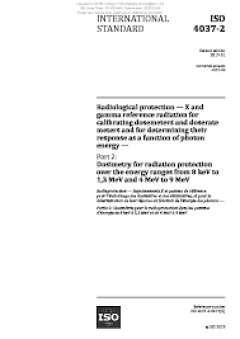
Neutron Reference Radiations for the Calibrating Neutron–Measuring Devices …
This part of ISO 8529 is closely related to two other standards concerning the calibration of dosimeters and dose-rate meters for neutron radiation. The first standard, ISO 8529-1 (in preparation), specifies the reference neutron radiations, in the energy range from thermal up to 20 MeV, and their production methods. The second standard, ISO 8529-2 (in preparation), describes fundamentals relat…
- Edisi
- -
- ISBN/ISSN
- -
- Deskripsi Fisik
- 20 p. : Illus. ; cm
- Judul Seri
- 1S0 8529 : 1989 (E)
- No. Panggil
- -
 Karya Umum
Karya Umum  Filsafat
Filsafat  Agama
Agama  Ilmu-ilmu Sosial
Ilmu-ilmu Sosial  Bahasa
Bahasa  Ilmu-ilmu Murni
Ilmu-ilmu Murni  Ilmu-ilmu Terapan
Ilmu-ilmu Terapan  Kesenian, Hiburan, dan Olahraga
Kesenian, Hiburan, dan Olahraga  Kesusastraan
Kesusastraan  Geografi dan Sejarah
Geografi dan Sejarah